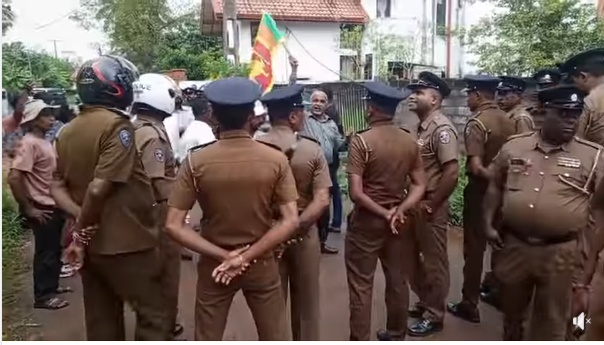I visited a friend’s home near the Fishermen’s Association premises in Negombo over the weekend, hoping to explore the area’s rich fishing culture. But instead of a quiet weekend, I witnessed an event that exposed the persistent ethnic tensions still running beneath the surface of Sri Lankan society.
Approximately 20 to 30 Tamil and Sinhala individuals had gathered at the premises to peacefully commemorate the civilians who lost their lives during the final days of the war in Mullivaikkal, Northern Sri Lanka, in May 2009. The gathering was calm—until several police vehicles suddenly arrived. About 30 officers disembarked and spread across the area.
Later, I learned that the police had been dispatched following threats from a Sinhala nationalist group known as Sinhala Ravaya. This group had earlier lodged a complaint against the planned commemoration, originally scheduled to take place at Thelwala Junction in Negombo. A court order had been issued, and the organizers agreed to relocate the event. However, many of the attendees were unaware that the gathering had been banned under the court’s directive.
As police secured the Fishermen’s Association premises, another group appeared—waving national flags and shouting hostile slogans at the commemorators. Tensions quickly rose, but the police responded effectively, blocking the protestors from entering and preventing any physical confrontation between the two groups.
Thankfully, the day ended without violence.
But this was not an isolated incident. Just days earlier, another Mullivaikkal commemoration in Wellawatte, Colombo, had also been disrupted by the same nationalist group.
Meanwhile, around the same time, a controversial social media post went viral. Allegedly shared by a Muslim individual, it warned foreign tourists visiting Arugam Bay not to walk the streets in bikinis, citing a need to “respect local cultural values.” Though seemingly unrelated, the timing and tone of the post reflect a parallel form of intolerance—an effort to police cultural expression, memory, and public behavior.
These three incidents—two involving memorials and one targeting tourists—raise difficult and urgent questions:
Who are these groups trying to impose their values on society?
What ideology drives them?
What authority do they claim to hold—and who supports them politically?
Are they seeking to undermine the democratic authority of the state?
Can the government afford to ignore these actions?
And most importantly: Can a government counter rising social extremism without resorting to constitutional power?
We have defeated terrorism. We have voted out political forces that thrived on fear and division. But have we truly dismantled the racism, extremism, and authoritarian mindsets that once fueled our darkest chapters? If not, what are we risking for the future?
These are no longer just matters of national security or political contest—they are questions about the soul of our republic. Are we ready to build a society grounded in justice, equality, and mutual respect for all? Or will we once again allow old ghosts to shape our present?
